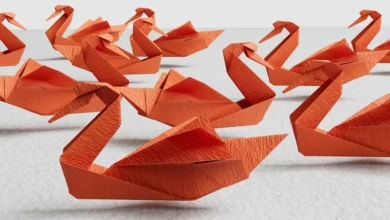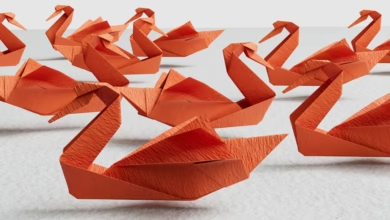Exploring Metal Mining: Sustainable Practices, Future Trends, and Innovations in Metallurgy

Metal mining is a vital cornerstone of modern civilization, underpinning various industries and enabling technological advancements. From the exploration of precious metals like gold and platinum to the extraction of industrial metals such as aluminum, copper, and zinc, the journey of metal mining encompasses a complex interplay of geology, engineering, and sustainability. As the demand for both ferrous and non-ferrous metals continues to rise, understanding the entire process—from initial exploration to sustainable production—becomes increasingly crucial.
In this article, we will delve into the intricacies of metal mining, examining the latest trends in precious and industrial metals, as well as innovations in metallurgy that are paving the way for a more sustainable future. We'll explore how metal recycling and 3D printing technologies are transforming the landscape of metal fabrication, reducing waste, and enhancing the efficiency of production methods. Join us as we navigate the world of metal commodities, shedding light on the future of base metals, rare earth metals, and the emerging significance of battery metals in the evolving energy landscape. Whether you're a seasoned investor in gold and silver or simply interested in the dynamics of the metal industry, this comprehensive overview will equip you with the insights needed to understand the current trends and challenges within the realm of metal mining.
- 1. Understanding Metal Mining: From Exploration to Sustainable Production
- 2. The Future of Metal Commodities: Trends in Precious and Industrial Metals
- 3. Innovations in Metallurgy: How Metal Recycling and 3D Printing are Shaping the Industry
1. Understanding Metal Mining: From Exploration to Sustainable Production
Metal mining is a multifaceted industry that encompasses a range of activities from exploration to sustainable production. Understanding this process is crucial for recognizing the significance of various metals in our daily lives and their roles in different sectors.
The first step in metal mining is exploration, where geologists utilize advanced techniques to locate deposits of both ferrous and non-ferrous metals. This phase involves geological surveys, drilling, and sampling to assess the viability of mining a particular area. Once a viable deposit is identified, the extraction process begins. The methods of extraction vary depending on the type of metal being mined—whether it’s base metals like copper and zinc or precious metals such as gold and platinum.
After extraction, the metal goes through a refining process where it is converted into usable forms, often through metallurgy. This process not only yields pure metals but also creates metal alloys that enhance specific properties for applications in construction, aerospace, and automotive industries. For instance, steel, aluminum, and various other construction metals are essential for building infrastructure, while specialized aerospace metals are critical for the aviation industry.
Sustainable metal production is an increasingly important focus within the industry. As demand for metals rises—driven by trends in battery metals like lithium for electric vehicles and energy metals for renewable energy technologies—mining operations are adopting more environmentally friendly practices. This includes enhancing metal recycling processes to reduce waste and lessen the environmental impact of new metal extraction.
Moreover, the rise of 3D printing metals is revolutionizing how products are manufactured, further emphasizing the need for sustainable sourcing and production methods. Industry players are now recognizing that responsible mining practices not only serve the environment but also align with growing consumer demand for ethically sourced materials, particularly in sectors like jewelry and luxury goods.
In summary, the journey from exploration to sustainable metal production involves a complex interplay of geology, technology, and environmental stewardship. As the metal commodities market continues to evolve, understanding these processes will be essential for investors, manufacturers, and consumers alike, particularly in the context of gold and silver investing, as well as the burgeoning market for rare earth metals and other critical materials.
2. The Future of Metal Commodities: Trends in Precious and Industrial Metals
The future of metal commodities is shaped by evolving market demands, environmental concerns, and technological advancements. As industries continue to innovate, both precious and industrial metals will play crucial roles in this transition.
In the realm of precious metals like gold and silver, gold investing remains a popular strategy among investors seeking stability in uncertain economic times. Silver, with its dual role as a precious metal and an essential component in various industrial applications, is also witnessing increased interest. The demand for silver in solar panels and electronics highlights its importance in the green energy sector, further driving its appeal.
On the industrial side, base metals such as copper, aluminum, and zinc are pivotal in modern manufacturing and construction. The rise of electric vehicles has accelerated the need for battery metals like lithium and cobalt, essential for high-performance batteries. The automotive industry's shift towards electric mobility is creating a surge in demand for both ferrous and non-ferrous metals, as manufacturers seek lightweight materials to enhance vehicle efficiency.
Metal recycling is becoming increasingly vital as industries aim for sustainable metal production. By reusing metals, companies can reduce waste and lower their carbon footprint. This trend is particularly significant for metals like aluminum and steel, which are widely used in construction and automotive applications. Additionally, the rise of 3D printing metals is revolutionizing metal fabrication, allowing for more efficient production processes and reduced material waste.
The exploration of rare earth metals is also gaining traction, driven by their applications in technology and renewable energy. These metals are crucial for manufacturing magnets, catalysts, and electronic components, making them indispensable in sectors ranging from aerospace to defense.
As we look to the future, the metallurgy field will need to adapt to the challenges of metal corrosion and the demand for advanced metal alloys that enhance performance in extreme conditions. Refractory metals, known for their high melting points and stability, will be key in industries such as aerospace and energy.
In conclusion, the trends in precious and industrial metals suggest a dynamic landscape for metal commodities. As we advance, the focus on sustainability, recycling, and innovative technologies will shape the metal mining sector and its contribution to a greener future.
3. Innovations in Metallurgy: How Metal Recycling and 3D Printing are Shaping the Industry
The metal mining industry is undergoing significant transformation due to innovations in metallurgy, particularly through metal recycling and 3D printing technologies. These advancements are not only enhancing production efficiency but also promoting sustainable practices within the sector.
Metal recycling has become a pivotal component in the supply chain of both ferrous and non-ferrous metals. The process of reclaiming metals from scrap reduces the need for virgin materials, thus minimizing the environmental impact associated with traditional metal mining. For instance, recycled aluminum and steel require significantly less energy to produce compared to their primary counterparts. This not only leads to cost savings but also aligns with global efforts towards sustainable metal production. As the demand for industrial metals, such as copper and zinc, continues to rise, the importance of recycling these base metals cannot be overstated. Additionally, precious metals like gold and silver are also increasingly sourced from recycled materials, making gold investing and silver investing more sustainable.
On the other hand, 3D printing technologies are revolutionizing how metals are fabricated. This method allows for the precise layering of metal alloys, resulting in reduced waste and the ability to create complex geometries that were previously challenging or impossible to achieve with traditional techniques. Industries such as aerospace and automotive are particularly benefiting from this technology, as it enables the production of lightweight components that enhance energy efficiency. Additionally, 3D printing is paving the way for the use of rare earth metals and refractory metals in applications that require high performance under extreme conditions.
Moreover, as the market for battery metals, such as lithium and nickel, grows due to the increasing demand for electric vehicles and renewable energy technologies, 3D printing is helping to streamline production processes. This innovation supports the development of custom solutions that can meet the specific needs of various sectors, including construction metals and jewelry metals.
As these metal trends evolve, the integration of metal recycling and 3D printing within the metallurgy landscape signifies a shift towards more sustainable practices. By embracing these technologies, the metal mining industry is not only enhancing its operational efficiency but also contributing to a circular economy that prioritizes resource conservation and environmental stewardship. This approach is essential for meeting the challenges of modern production demands while ensuring the longevity of our metal commodities.
In conclusion, the intersection of metal recycling and 3D printing is shaping the future of the metallurgy field. As industries continue to adapt to these innovations, they will play a crucial role in promoting sustainability while meeting the growing demand for various metals across different applications.
In conclusion, the world of metal mining is a dynamic and essential sector that encompasses the exploration, extraction, and production of various metals, including both precious and industrial types. As we navigate through the complexities of metal commodities, understanding the trends surrounding ferrous and non-ferrous metals becomes increasingly vital. Innovations in metallurgy, particularly in metal recycling and 3D printing, are revolutionizing how we approach sustainable metal production, allowing for more efficient use of resources and reducing the environmental impact of metal extraction.
The future holds promising developments as we witness a surge in demand for rare earth metals, battery metals, and other alloys crucial for industries like aerospace, automotive, and construction. The rise of gold and silver investing further highlights the importance of these precious metals in the global market. As we move forward, embracing advancements in metal fabrication and addressing challenges such as metal corrosion will be essential for the longevity and sustainability of metal mining.
By staying informed about the latest metal trends, including the evolving roles of aluminum, copper, zinc, platinum, and palladium, stakeholders can make strategic decisions that support both economic growth and environmental stewardship. Ultimately, the intersection of innovation and sustainable practices will shape the future landscape of metal mining, ensuring that we meet the demands of a rapidly changing world while preserving our planet for future generations.
References:
– [Insert relevant references here].





